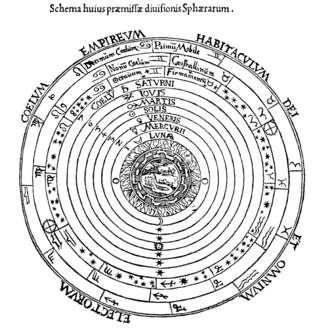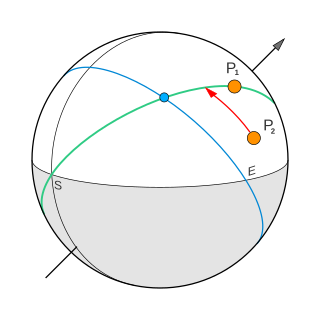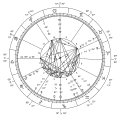Astrology is a range of divinatory practices, recognized as pseudoscientific since the 18th century, that propose that information about human affairs and terrestrial events may be discerned by studying the apparent positions of celestial objects. Different cultures have employed forms of astrology since at least the 2nd millennium BCE, these practices having originated in calendrical systems used to predict seasonal shifts and to interpret celestial cycles as signs of divine communications. Most, if not all, cultures have attached importance to what they observed in the sky, and some—such as the Hindus, Chinese, and the Maya—developed elaborate systems for predicting terrestrial events from celestial observations. Western astrology, one of the oldest astrological systems still in use, can trace its roots to 19th–17th century BCE Mesopotamia, from where it spread to Ancient Greece, Rome, the Islamic world, and eventually Central and Western Europe. Contemporary Western astrology is often associated with systems of horoscopes that purport to explain aspects of a person's personality and predict significant events in their lives based on the positions of celestial objects; the majority of professional astrologers rely on such systems.

The zodiac is a belt-shaped region of the sky that extends approximately 8° north and south of the ecliptic, the apparent path of the Sun across the celestial sphere over the course of the year. Also within this zodiac belt appear the Moon and the brightest planets, along their orbital planes. The zodiac is divided along the ecliptic into 12 equal parts ("signs"), each occupying 30° of celestial longitude. These signs roughly correspond to the astronomical constellations with the following modern names: Aries, Taurus, Gemini, Cancer, Leo, Virgo, Libra, Scorpio, Sagittarius, Capricorn, Aquarius, and Pisces.

A horoscope is an astrological chart or diagram representing the positions of the Sun, Moon, planets, astrological aspects and sensitive angles at the time of an event, such as the moment of a person's birth. The word horoscope is derived from the Greek words ōra and scopos meaning "time" and "observer". It is claimed by proponents of astrology that a horoscope can be used as a method of divination regarding events relating to the point in time it represents, and it forms the basis of the horoscopic traditions of astrology, although practices surrounding astrology have been recognized as pseudoscientific since the 18th century. Horoscope columns are often featured in print and online newspapers.
Western astrology is the system of astrology most popular in Western countries. Western astrology is historically based on Ptolemy's Tetrabiblos, which in turn was a continuation of Hellenistic and ultimately Babylonian traditions.
Horary astrology is an ancient branch of horoscopic astrology in which an astrologer attempts to answer a question by constructing a horoscope for the exact time at which the question was received and understood by the astrologer.

In Western astrology, astrological signs are the twelve 30-degree sectors that make up Earth's 360-degree orbit around the Sun. The signs enumerate from the first day of spring, known as the First Point of Aries, which is the vernal equinox. The astrological signs are Aries, Taurus, Gemini, Cancer, Leo, Virgo, Libra, Scorpio, Sagittarius, Capricorn, Aquarius, and Pisces. The Western zodiac originated in Babylonian astrology, and was later influenced by the Hellenistic culture. Each sign was named after a constellation the sun annually moved through while crossing the sky. This observation is emphasized in the simplified and popular sun sign astrology. Over the centuries, Western astrology's zodiacal divisions have shifted out of alignment with the constellations they were named after by axial precession of the Earth while Hindu astrology measurements correct for this shifting. Astrology was developed in Chinese and Tibetan cultures as well but these astrologies are not based upon the zodiac but deal with the whole sky.
Electional astrology, also known as event astrology, is a branch found in most traditions of astrology according to which a practitioner decides the most appropriate time for an event based on the astrological auspiciousness of that time. It differs from horary astrology because, while horary astrologers seek to find the answer to a question based on the time the question was asked, electional astrologers seek to find a period of time which will result in the most preferable outcome for an event being planned.
Astrological belief in relation between celestial observations and terrestrial events have influenced various aspects of human history, including world-views, language and many elements of culture. It has been argued that astrology began as a study as soon as human beings made conscious attempts to measure, record, and predict seasonal changes by reference to astronomical cycles.
Astrology and astronomy were archaically treated together, but gradually distinguished through the Late Middle Ages into the Age of Reason. Developments in 17th century philosophy resulted in astrology and astronomy operating as independent pursuits by the 18th century.
Essential dignity, in the context of an astrological horoscope or natal chart, refers to the relative “strength” or “weakness” of a planet based on its zodiac sign and specific degree. This strength or weakness is referred to as the planet’s essence—what the 17th-century astrologer William Lilly called "the strength, fortitude or debility of the Planets [or] significators."
In astrology, a decan is the subdivision of a sign. In order to give fuller interpretation to the zodiac signs, ancient astrologers subdivided each sign into periods of approximately ten days. These divisions are known as the "decans" or "decanates" and cover modifications of individual traits, attributed to minor planetary influences, which temper or blend with the ruling influence of the period. The ten-day spans are somewhat arbitrary in order to allow for the five extra days in the year beyond the 360 days required for the thirty-six decans.

Tetrabiblos, also known as Apotelesmatiká and in Latin as Quadripartitum, is a text on the philosophy and practice of astrology, written by the Alexandrian scholar Claudius Ptolemy in Koine Greek during the 2nd century AD.

Nicholas Campion is a British astrologer and historian of astrology and cultural astronomy. He is the author of a number of books and currently pursues an academic career.

Babylonian astrology was the first known organized system of astrology, arising in the second millennium BC.
Hellenistic astrology is a tradition of horoscopic astrology that was developed and practiced in the late Hellenistic period in and around the Mediterranean Basin region, especially in Egypt. The texts and technical terminology of this tradition of astrology were largely written in Greek. The tradition originated sometime around the late 2nd or early 1st century BCE, and then was practiced until the 6th or 7th century CE. This type of astrology is commonly referred to as "Hellenistic astrology" because it was developed in the late Hellenistic period, although it continued to be practiced for several centuries after the end of what historians usually classify as the Hellenistic era.

In astrology, certain stars are considered significant. Historically, all of the various heavenly bodies considered by astrologers were considered "stars", whether they were stars, planets, other stellar phenomena like novas and supernovas, or other solar system phenomena like comets and meteors.
Locational astrology is any of various types of astrology that factor in specific locations of the Earth. The different types also carry a range of astrological techniques.

The early Christians, like the early Jews, were vehemently opposed to astrology, even attributing it to demonic origin.
In astrology, planets have a meaning different from the astronomical understanding of what a planet is. Before the age of telescopes, the night sky was thought to consist of two similar components: fixed stars, which remained motionless in relation to each other, and moving objects/"wandering stars", which moved relative to the fixed stars over the course of the year(s).

Primary direction is a term in astrology for referencing one of the oldest methods of predicting events. It indicates the year of life in which an event shown by the birth chart will occur. This method has been around for over 1800 years and is mentioned in the Tetrabiblos of Claudius Ptolemy in the section on calculating the length of life. It gained widespread popularity in medieval Europe and was thoroughly described by Jean-Baptiste Morin in the 22nd book of his Astrologia Gallica.










